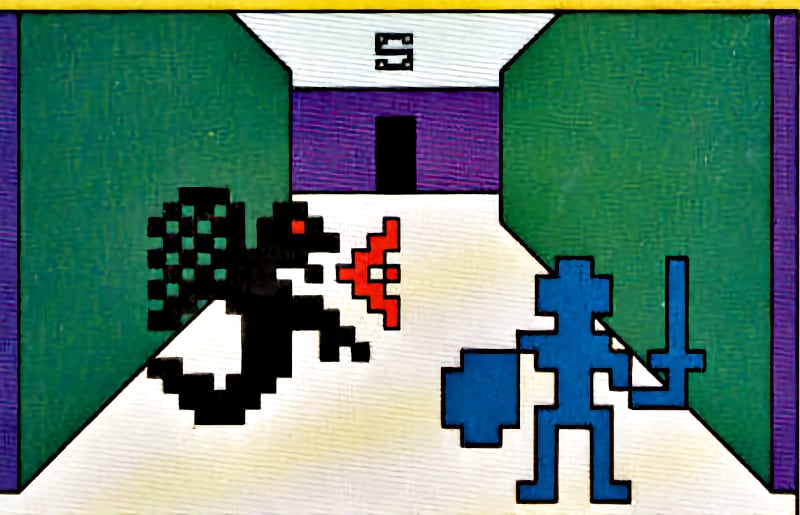
There’s something lost in the instantaneous gratification of today’s technology. Anticipation.
Cabel Sasser’s exquisitely detailed blog post on the rise and fall of the DAK Industries catalog reminded me of this. Though I’m not sure I ever set my eyes on a DAK catalog, everything about it brought back memories of my childhood fascination with the game which was technology itself.
If you are of a certain age (and were an enthusiast for technology when growing up), set aside some time to read Sasser’s story and accompanying archive of DAK catalogs. It’s a glimpse back to when those pedaling the latest innovative landline phone or cassette recorder had shared exuberance with the customer because they were just as much enthusiasts.
The catalogs Sasser has collected are an art form in themselves, but even less creative efforts of the time could be incredibly exciting.
My first computer was a TI 99/4A, a system that was already discontinued when my grandpa gave it to me, but it felt remarkably alive as I learned bits of BASIC programming. TI ran out of the computing market long before other venerable early brands, sadly. But, enough of us were out there that a quarterly catalog from TM Direct listed all the exciting software cartridges and expansion modules well into the mid-90s.
I never did get the expansion kit that added a disk drive, but just imagining what it could do… Or the voice synthesizer! Can you imagine? A computer that can talk to you!
I spent so many happy hours putting in the Tunnels of Doom cartridge and then listening to the squeal of garbled sounds from a cassette tape recorder feeding maps of dungeons to the computer (the cartridge only held part of the game, different cassettes could customize it). Like making a handcrafted Aeropress coffee today, the process added to the enjoyment when it was time to face monsters and cast spells. My friends all had NESes, but they loved coming to sit around my TI.
Then came the PC era. I started on the “IBM clone” side of the world before my conversion to Mac in the early 2000’s. I remember going to the library in my early teens and buying old copies of magazines such as Byte and PC/Computing for a nickel. I pored over them so much that I can still reconstruct the layout of pages down to the slightest detail. The articles and reviews were interesting, but the ads could hold as much intrigue for me.
(One such magazine, Computer Shopper was a telephone book sized — back when telephone books had size — compendium of ads more than anything else. I reveled in it.)
Lacking a serious graphics editor (or editing skills), I would take pen to paper, sketching out my own ads and magazine layouts matching those different publications’ features. Oh, the countless hours of low-tech time I spent dreaming of the wonders of the high-tech.
One of the most exciting parts was the offers of demo disks. Until the mainstream arrival of the Internet, software vendors’ ads would promise a free diskette demoing their wares to those who wrote in.

Sometimes those demos were purely a pitch, but anticipating what they might do was half the fun. I loved it. Mailing off the request card, waiting and checking the (physical) mailbox — it was the process that made it memorable.
A Harvard Graphics demo disk stands out in my mind. I was years out from the first time I ever put together a presentation — by the time I did, PowerPoint had crushed Harvard Graphics — but wow, the possibilities! Charts! Transitions! Sedate as a “presentation” may be now, this felt downright amazing to the kid version of me in the 1990s.
(Yes, I also had a Sega Genesis and PC games. I didn’t spend all my time imagining making corporate expense report presentations, but I sure enjoyed the latter adventure along with the former.)
There was a mystique to the whole computing frontier as it matured just enough for “normal people” to access it. Not esoteric, but with plenty of weird, quirky places to explore. And with publications like Byte, the “mainstream” and the “quirky” had not yet diverged.
I think the last time I experienced that may have been my first taste of Linux in the late 90’s. If memory serves, it was none other than the soon-to-be-lost Byte that featured a preview of things happening in the Linux world.
I saved to buy a copy of RedHat Linux to answer the call of the mysterious not long after. SuSE Linux, whose software boxes weighed more than my last two computers, thanks to gloriously detailed — and once again reminiscent of a telephone book — reference manuals packed in, beckoned thereafter. Early GNU/Linux was one last grand “it’s still being assembled” tour of tech for me before a preowned Ruby Red iMac G3 began my Apple-fication a half decade later.
Occasionally a touch of that frontier excitement still shows up. Reading Sasser’s remembrance that took me back to my own memory album clued me in on why his own company, Panic, has the flair in marketing that it does. I’ve bought a few Panic products over the years I wasn’t even sure I needed thanks to their dash of electronics pioneer contagious enthusiasm.
(I have not yet justified to myself picking up their fanciful Playdate retro-ish handheld gaming system, but feast on that thing’s exuberant design. It could be straight from one of those old catalogs or a shelf of a RadioShack, back when RadioShack meant a distinct door chime, the aroma of freshly made electronics and boxes of transistors and wires lining the walls.)
That’s what is missing from too much of even the best tech today. I’m too much of an Apple geek for my own good and I certainly don’t wish my Apple silicon MacBook Pro were less well polished. The simple elegance of well-made modern tech is fantastic and, no longer a kid, I can get far more done because of the advances we enjoy now.
But, I miss that je ne sais quoi of yesteryear’s emerging tech world. As a kid, electronics and computers that were merely partially assembled made the tech itself an endlessly enchanting game. Perhaps Raspberry Pis and Swift Playgrounds fill the role that building one’s first PC clone did then.
But waiting on a demo disk to arrive by postal mail? I don’t think there’s anything to replace that.

Timothy R. Butler is Editor-in-Chief of Open for Business. He also serves as a pastor at Little Hills Church and FaithTree Christian Fellowship.
You need to be logged in if you wish to comment on this article. Sign in or sign up here.
Start the Conversation